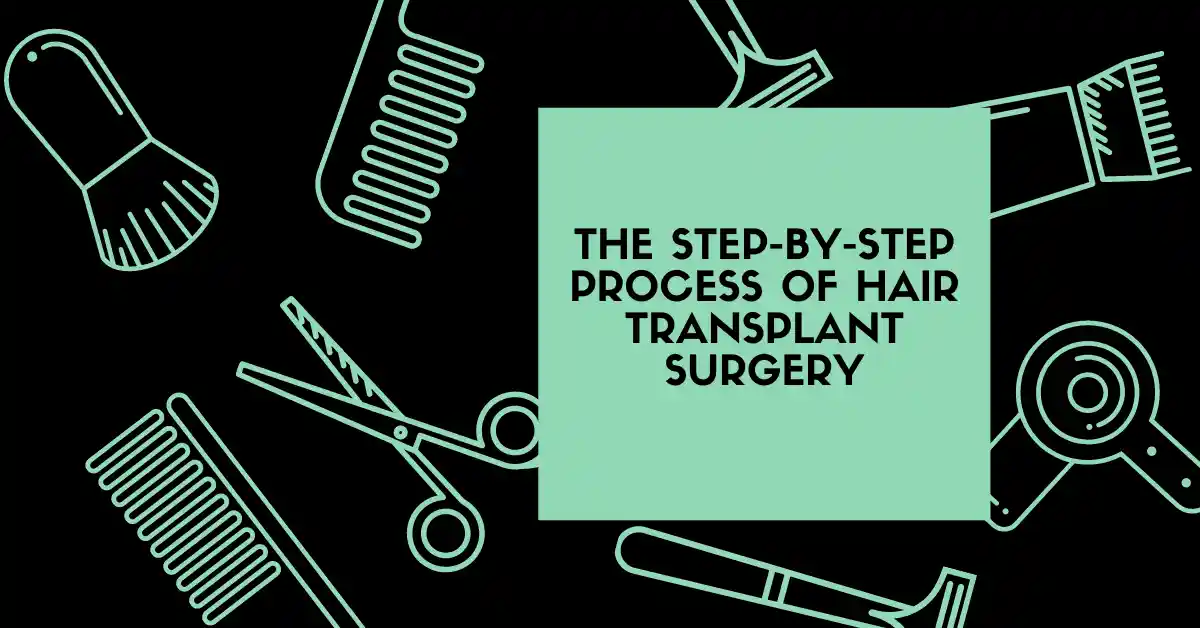Hair transplantation is a surgical procedure that involves removing healthy hairs from your scalp. These hairs are then placed into bald or thinning areas of your scalp.
Your dermatologist will inject a local anesthetic into your scalp to make the extraction and implantation painless. Depending on your preferences, this may include a mild oral sedative.
Preparation
The hair transplant procedure involves moving hair follicles from dense, healthy growth to a bald or thinning area. This produces a natural, full appearance and may reverse the effects of hair loss, although it is not a permanent solution. Several surgical sessions are usually needed to achieve the desired results.
Your surgeon will give you specific instructions about what to do before and after the surgery. You should follow these instructions closely. For example, your doctor might advise you to stop smoking and avoid certain vitamins and medications inhibiting blood flow to the scalp and interfere with healing.
During hair transplantation, your healthcare provider numbs the area of your scalp where the grafts will go using local anesthesia. They might use a scalpel or a needle to create tiny holes or slits in the area that will receive grafts. They might also use a special device to punch a round graft out of your scalp, which is placed into the hole or slit in your head.
If your medical practitioner performs a flap procedure, they might implant balloon-like devices under the skin of a hair-bearing section of your scalp (called a tissue expander). They will slowly inject saline into these devices over weeks, which causes the scalp to grow more skin cells. This allows your medical practitioner to take more grafts during the surgery.
Extraction
Hair transplant surgery involves moving healthy hair follicles from areas of thick growth to bald or thinning areas. This is a surgical procedure, and it can take several sessions to achieve the desired results. During the surgery, you’ll receive local anesthesia to numb your scalp and medicine to relax you.
After the anesthesia has taken effect, your dermatologist will remove the healthy hairs for transplantation. This can be done by cutting a strip of hair-bearing skin with a scalpel or removing individual hairs through tiny holes called punch grafts or slits.
The follicles removed are transplanted to your scalp’s bald or thinning areas. This process can take up to eight hours, depending on the work.
Whether your doctor chooses to use the follicular unit transplant (FUT) or the follicular unit extraction (FUE), method will determine how long the surgery takes. Both procedures have their benefits and disadvantages. FUT generally offers a shorter recovery time but can leave scars behind. FUE uses a handheld device to extract individual hairs through microscopic circular incisions in your scalp.
The number of follicles harvested and the caliber of your remaining hair are crucial to the success of your restoration. Hair follicles with a thinner shaft diameter offer less surface coverage and are not as successful at filling in balding areas.
Preparation for Implantation
Your surgeon will advise on preparing for your surgery and the aftercare process. They will tell you to wash the transplanted area regularly and avoid excessive rubbing or impacts on the head. This promotes healthy blood flow and speeds up the healing process after hair transplantation. They also suggest avoiding direct sunlight on the scalp for a few months to prevent premature loss of newly implanted grafts.
On your hair transplant surgery day, you will arrive at the clinic and be checked in by our nurses. Afterward, they will guide you through the procedure. You will be under local anesthesia and sedation during the surgery to make you comfortable. This means you won’t feel any pain but may experience tugging or pressure. If you have a more complex hair restoration surgery involving tissue expansion or flaps, your doctor might use general anesthesia to help you sleep through the procedure.
The first step is preparing the donor site, which consists of the back and sides of your scalp. This is done by numbing the scalp with medicine or a needle. Your doctor will choose two surgical methods: follicular unit strip surgery (FUSS) or follicular unit extraction (FUE).
Implantation
Hair transplantation involves moving healthy full-size, vigorously growing hair follicles from one area of your scalp (the “donor area”) to thinning areas or balding parts of your head. According to the American Society of Plastic Surgeons (ASPS), this minimally invasive procedure is a safe way to address pattern baldness by increasing the density of your growing hair. It can also help you blend the appearance of thinning and balding areas with your thicker areas.
To prepare for the surgery, your doctor will trim the hair-bearing sections of your scalp to serve as donor sites for the grafts. They’ll also apply anesthesia to numb your scalp and administer a mild sedative.
If your doctor uses the follicular unit strip surgery (FUSS) technique, they’ll start by creating a 6- to 10-inch strip of skin in the back of your head and stitching it closed. Afterward, a microscope will be used to separate the strip into small follicular units consisting of one or multiple hair follicles.
Your provider will either remove the follicular units directly from your scalp (called punch grafts) or they’ll place them in a holding solution of chilled saline. Depending on your surgeon’s choice of procedure, they may plant the grafts into holes or slits created in your scalp with a scalpel or needle. They’ll likely seek help from other team members to complete the implantation process.
